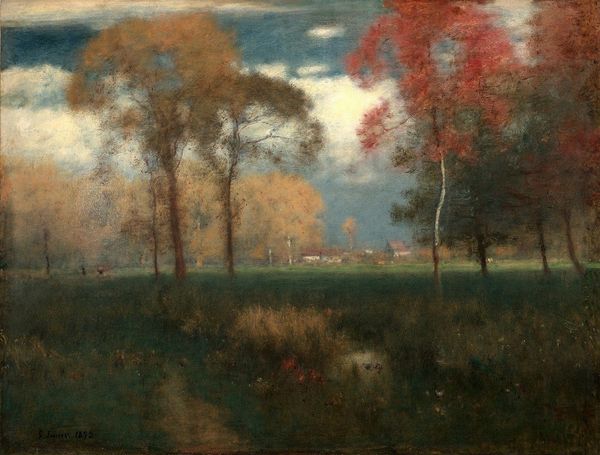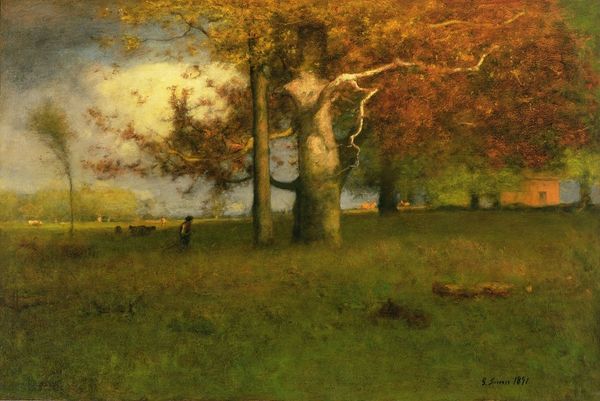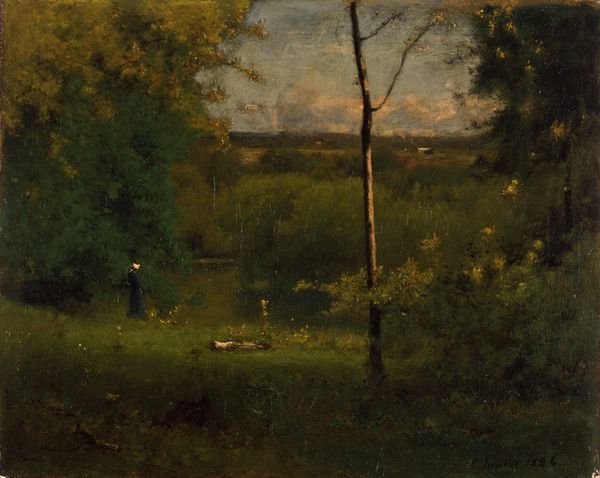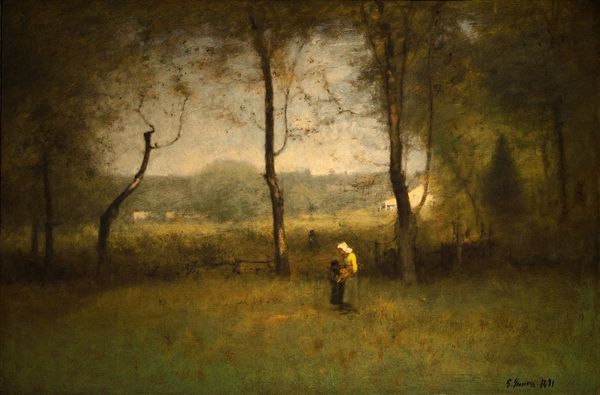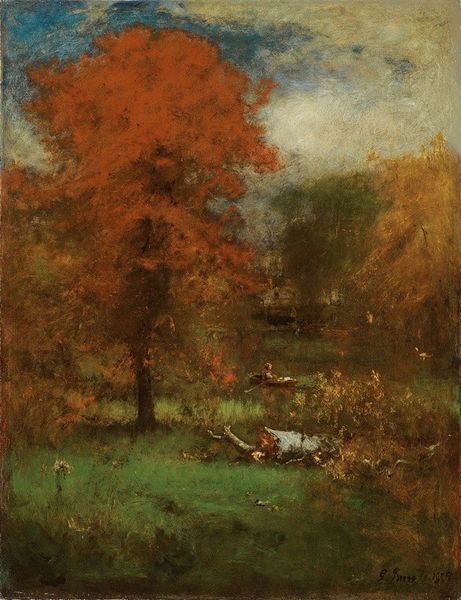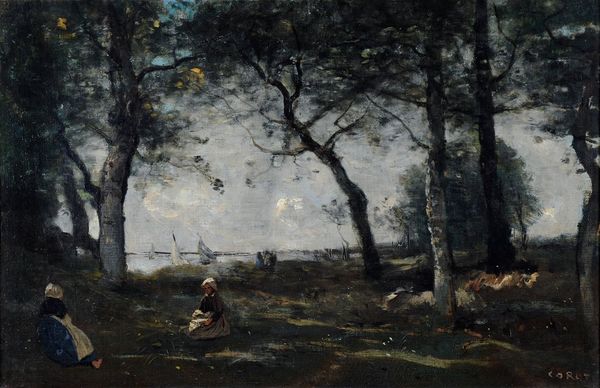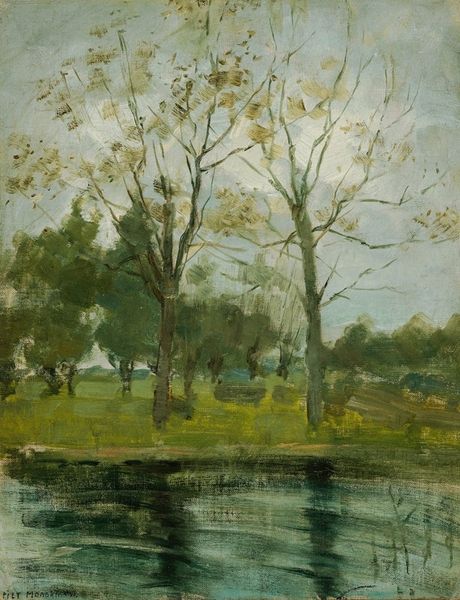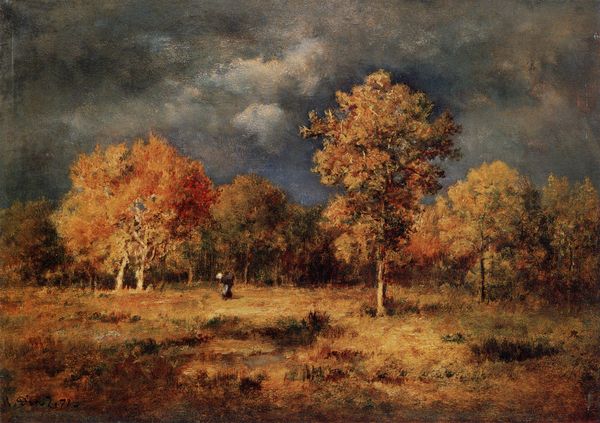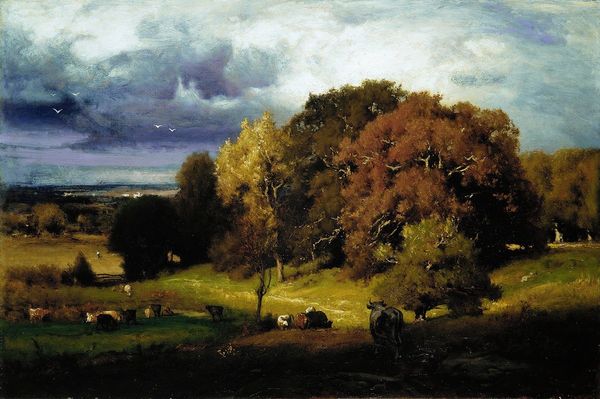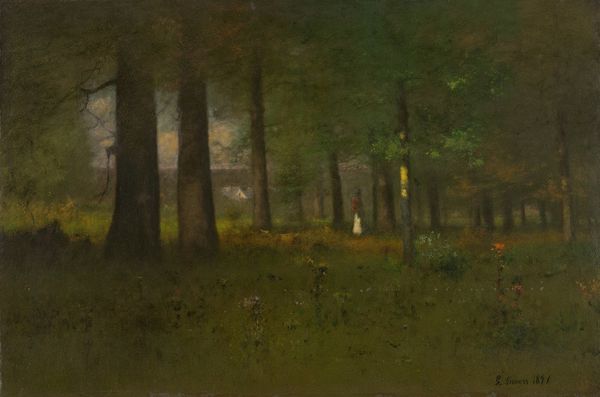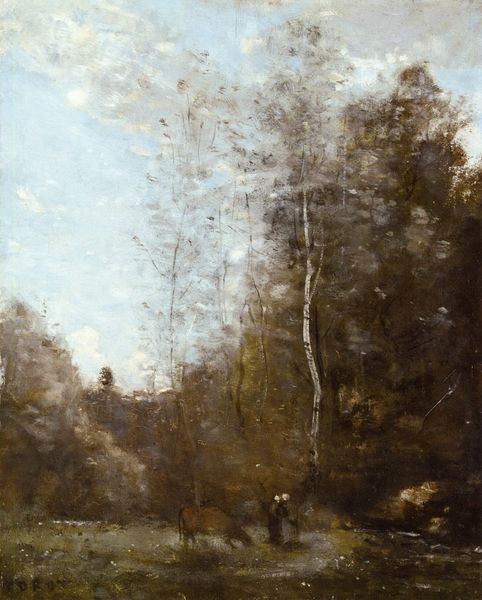
Copyright: Public Domain: Artvee
Editor: This is "Landscape," an oil painting from 1888 by George Inness. There's such a gentle, almost hazy feel to it, and the light seems to be diffused across the entire canvas. What are your thoughts on how Inness used composition in this painting? Curator: The formal organization of this landscape reveals much. Notice the subdued palette, with its muted greens, browns, and blues. Inness orchestrates these colors in a way that softens the transition between earth and sky. What impact do you think this close tonal arrangement has on the pictorial structure? Editor: It feels unified, almost dreamlike, like the boundaries between different elements are blurring. I can't tell where objects are beginning or ending. Curator: Precisely. The artist constructs the landscape through a careful control of atmospheric perspective. Observe how Inness employs broken brushstrokes to render the foliage and the land, moving toward an almost abstract reduction of form. What feeling do these methods evoke within you? Editor: It creates a sense of tranquility, but there's also a bit of mystery. The figure is there, but their integration feels seamlessly related with everything else in nature. I almost didn't notice the person! Curator: The placement of the figure, set deep within the recessional plane, is key. How might the size and placing within this formal structure direct our gaze? Editor: It really puts emphasis on the surrounding scenery instead of singling out that character. I've learned that a painting's intrinsic organization is really vital to how one perceives and feels a work. Curator: Indeed. It demonstrates how a formal language may speak with profound impact and can shift our focus in any given composition.
Comments
No comments
Be the first to comment and join the conversation on the ultimate creative platform.
